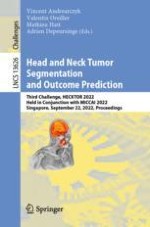2023 | OriginalPaper | Chapter
Simplicity Is All You Need: Out-of-the-Box nnUNet Followed by Binary-Weighted Radiomic Model for Segmentation and Outcome Prediction in Head and Neck PET/CT
Authors : Louis Rebaud, Thibault Escobar, Fahad Khalid, Kibrom Girum, Irène Buvat
Published in: Head and Neck Tumor Segmentation and Outcome Prediction
Publisher: Springer Nature Switzerland
Activate our intelligent search to find suitable subject content or patents.
Select sections of text to find matching patents with Artificial Intelligence. powered by
Select sections of text to find additional relevant content using AI-assisted search. powered by
